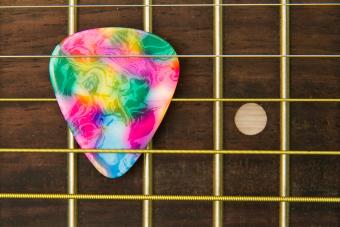
If you're interested in what makes a great guitar sound great, learning about classical guitar construction is a way to learn how to separate a terrific guitar from a so-so guitar. Besides the obvious factors like types of wood, other aspects of its construction influence how the guitar sounds as well. The guitar's size, shape and how it's braced also play important roles in the tone the instrument produces. Learn more about the ins and outs of classical guitar construction.
Understanding Classical Guitar Construction
The following information will provide you with the basics that influence how a classical guitar is constructed.
Tone Woods
The single most significant aspect of a guitar's construction is which kind of wood is used. Different woods produce different sounds when they are used in different aspects of the guitar's construction. The main decisions a luthier needs to make relate to the top of the guitar and the back and sides.
- Top - The top of the guitar, also called the guitar's soundboard, plays a large role in the sound of the guitar. How the guitar projects as well as the overall color of the guitar's sound are both attributable to the type of wood of which the soundboard is made. The two main woods used for the top are spruce and cedar, and each has its own unique sound characteristic. Cedar affects the sound of the guitar more by influencing tones at all levels of the guitar's sound spectrum. Spruce is a much more transparent wood, and it provides more clarity to the sound of the instrument.
- Back and Sides - The back and sides of the guitar are where luthiers like to experiment. Exotic woods like koa and redwood are sometimes used to create unique sounding instruments. More common woods used for a guitar's back and sides are east Indian rosewood and rock maple. Rosewood has a warm, complex sound that works great for acoustic guitars, and rock maple is a very dense wood that leads to a sound with more punch.
Body Shape
The shape of the guitar is also very significant when it comes to the sound a guitar makes. In terms of nylon string guitars, there are two body shapes typically used: flamenco and classical. The general rule of thumb is that flamenco shaped guitars are smaller and lighter than classical guitars. Flamenco guitars have a shallow body, a thinner top, back and sides, and they use smaller bracing on the inside. The sides of a flamenco guitar are as much as one inch narrower than the sides of a classical concert guitar. As you might expect, flamenco guitars have a brighter sound that responds well to the plucking, percussive techniques used in that style of music.
Bracing
The bracing refers to the narrow strips of wood that are glued to the inside of the guitar. The practical function of bracing is to support the body of the guitar and allow it to withstand the tension put upon it by the strings when they are at full tension. However, bracing also plays an integral role in how a guitar sounds. There are two main types of bracing styles with classical guitars.
- Fan bracing - Fan bracing is the most common type of bracing used in classical guitars. In fan bracing, a center brace (usually made of spruce) is glued to the inside of the top of the guitar along the middle of the guitar. Other braces are glued to it and spread away from this anchor brace in a fan pattern. This bracing produces a strong, thick sound that is desired by many guitar players.
- Lattice bracing - Lattice bracing is, as the name suggests, one in which the braces on the inside of the soundboard are arranged in a grid, or lattice, pattern. Since lattice bracing is stronger than fan bracing, the guitar can be made with a thinner top, which means the guitar's volume is greatly increased.
Tip of the Iceberg
These are just the major elements of classical guitar construction, but the subject is far more complex than these basics. People have been passing down classical guitar building techniques for generations, and many have devoted their lives to perfecting this craft. Be prepared for a lifelong journey if you become interested in constructing classical guitars.







